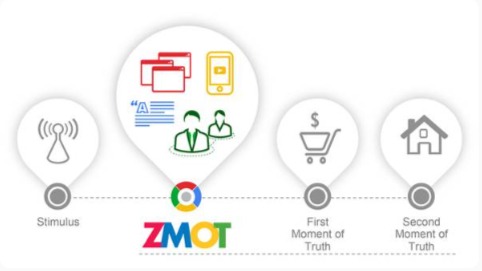As Website positioning priorities have shifted around the a long time from a concentration on search phrases to a more written content-centric approach, the attractiveness of the subject matter of person research intent has risen correspondingly — and rightfully so.
Right now, most Search engine optimization professionals agree that content constructed for particular user intents is not only extra practical for people it is extra likely to rank in research engines when it counts the most.
Search engines (Google, in specific) have invested a excellent offer in sniffing out consumer intent for any specific question, possessing recognized that end users are extra pleased when information not only matches a key phrase but addresses the intention of their research.
For case in point, greater intent matching is an aspect of Google’s BERT venture (the natural language processing AI motor that discerns the intent of a search query).
With BERT now influencing practically 100% of look for queries, it’s time for a further dive on the topic of person search intent.
Standard Consumer Intent Types
For as long as search intent has been a subject for Search engine optimisation professionals and content material entrepreneurs, we have relied on a number of somewhat broad person intent types.
Advertisement
Continue Looking at Under
The listing differs dependent on whom you request, but these are usually provided:
- Informational: The user is looking for awareness about a subject. These are typically who/what/when/the place/why/how queries, even though they never have to include those people words and phrases.
- Navigational: The consumer wishes to get to some unique website or webpage. Usually this person has a specific task in intellect or is familiar with/suspects the place of the details they are trying to find.
- Transactional: The consumer would like to buy anything, although the transaction does not have to be monetary. This user is prepared to acquire action.
- Local: The consumer is wanting for a resource geographically close to their recent site (or a stated area).
These standard groups have served us properly, as they neatly sum up the key reasons why any individual goes to a search engine (at minimum in broad phrases).
They assistance Search engine marketing specialists and content professionals system and build information that is more likely to be practical to individual end users and, as a result, additional beneficial to lookup engines.
From Broad to Micro Intentions
On the other hand, as with any this kind of wide groups, it can usually be helpful to break them down even further.
For one particular matter, even though we can be fairly sure search engines use some kind of the standard person intent classes stated above, it is probably that device-discovering driven equipment these kinds of as BERT permit them to go further, to discern what we could possibly get in touch with micro-intentions.
Advertisement
Continue on Looking through Beneath
Google has talked about the usefulness of rising granularity of wide classes in other contexts. A person excellent example is the thought of micro-moments.
Micro-times are an advancement on the traditional being familiar with of shopper journeys.
The idea goes over and above the standard funnel groups. In the on the net realm, customers generally have lots of little measures throughout several devices that impact their final getting determination. Experiments on this topic underpinned Google’s “zero moment of reality” principle, an addition to the traditional marketing journey.

The “Zero Minute of Truth” (ZMOT) is made up of all interactions a client might have on a lot of equipment about time that together influence their remaining getting final decision.
We can apply a very similar product to build what I contact “micro intentions” – the smaller, numerous look for intentions somebody might have inside the extra extensive conventional person search intent types.
Why Micro Intentions
Recall that the “O” in Seo stands for “optimization.”
The act of optimizing for look for is a quest to present the most authoritative, applicable response to a query in the most person-welcoming method possible.
Micro intentions arrive into participate in in the center of that authority/relevancy/usability triad: they hone the relevancy of content to specific consumer requirements to a sharper degree than is probable with just the “big four” conventional intention types.
Successful micro intent searches can include up to sizeable victories in excess of time, much in the identical way as an Website positioning experienced would function to improve authority by getting much better-qualified back links or strengthening usability by earning incremental tweaks to page pace.
In which Micro Intentions Are Useful
Admittedly, the usefulness of micro intentions is greater for some of the major four intentions than many others.
Advertisement
Continue on Looking at Down below
For navigational and area person intent, the range of micro intentions matches the variety of queries.
The micro intent is inherent in the question alone.
Somebody exploring “Microsoft website” obviously wishes to go to microsoft.com, whilst the man or woman exploring “pizza north New Jersey” is seeking out the ideal pizza that exists on this earth, of course.
My micro intentions concept is most beneficial for informational and transactional queries, so let us see what this seems to be like in people classes.
Some Proposed Micro Intentions
Study facts on what these micro intentions are does not but exist, to my awareness.
Having said that, we can make some fair suppositions for the informational and transactional groups.
Informational Micro Intentions
I’ll begin off with the tweet by Mordy Oberstein that inspired this post:
One thing I have been imagining about.
“We” produce items to “tell” – you know “informational intent”
I despise that phrase.
I think we must write to educate – instructional intent.
Diff? Yes!
One is focused on the content material the other on how the reader will assimilate that data! pic.twitter.com/SzXsJ4c09P
— Mordy Oberstein (@MordyOberstein) December 17, 2020
Advertisement
Proceed Studying Underneath
I disagree with Mordy somewhat.
I do not imagine academic replaces informational intent rather, it is a micro intent of the informational intent group.
Academic content is just a person type, way too, although it’s probably the most significant subset of that classification.
So how is academic information a much more specific kind of informational information?
I consider instructional written content is that which goes into terrific element on a matter. It satisfies the person whose desire is for a lot more than a speedy response or a particular reality.
Instructional written content is made for the person who desires to broaden their information on a matter to come absent recognizing a superior deal more about it than before they entered their query. It is, as a result, generally for a longer time than most other forms of informational content.
What are some other doable micro intentions below the informational class?
- Factual: The consumer wants to understand about or verify a unique reality.
- Instructional: The consumer needs to know how to do some thing.
- Expansional: The user wishes associated topics or places of growth on a base subject.
- Aggregational: The consumer wishes to see a wide variety of thoughts or viewpoints about a subject matter.
Advertisement
Continue on Looking through Beneath
Can you see that each individual of these phone calls out for a certain form of material?
That is worthwhile context that “informational” on your own does not give you.
To turn out to be the most suitable answer for certain teams of people, you require to assume beyond the large 4 categories.
Transactional Micro Intentions
Numerous transactional queries are self-contained micro intentions, very similar to how regional and navigational intent queries perform.
That is, they contain the micro intent within just themselves. An instance would be “buy Nikon d5600 digital camera.”
But there are real micro intentions for less unique transactional queries.
Listed here are a couple of examples:
Categorical
The user would like to purchase a sort of point but does not essentially treatment which of that form they will acquire.
End users just want to see a show of solutions and will make their selection from there.
This might appear to be like an informational query, but it’s not (for research reasons) simply because this user is completely ready to get.
Trying to find out a lot more information in advance of acquiring is not their best precedence.
Ad
Continue Looking at Under
Locational
This is an great example of how the massive 4 intentions can bleed more than into every single other.
This user is ready to buy and just needs to know where by to acquire it.
Though the “where” does not have to be a bodily spot, there are factors of informational and area intent at perform.
For this micro intent, you want to be the greatest choice in every achievable way.
Generic
This user doesn’t treatment what brand name they get they just want to get the issue they want.
Data on a landing site for this micro intent wants to go outside of the brands obtainable to concentrate on other differentiating elements (cost, functions, and so on.).
Micro Intentions & Information Method
The thought of micro intentions is most handy for Web optimization industry experts and material strategists hunting to maximize targeted visitors and site earnings by increasing the variety of queries for which they rank.
At a sure stage, just after optimizing for all of the large volume head conditions for your marketplace, these types of growth can only occur by digging deeper into very long-tail queries.
Advertisement
Continue Reading Under
This is where by planning written content for micro intentions is very likely to produce greater success than simply relying on the common huge four intentions.
Recall that Google is actively seeking to boost its capacity to match person queries with the content material that most precisely matches their intent. And with BERT-design and style technologies, it is extremely possible they are performing that at a amount considerably far more granular than the huge 4.
That suggests there is major targeted visitors up for grabs to the web-sites that can build the most content aimed at micro intentions.
How do you discern what micro-intentional types persons are exploring for in your topic areas?
A person excellent resource, at minimum for informational queries, is Google’s ‘People Also Request.’ The certain issues folks ask can be clues to micro intentions.
An additional may perhaps be Google Question Hub (just opened to US publishers as I write this short article).
Listening to your buyers, talking to your revenue and client service reps, and examining your inner web page research analytics might also present valuable clues to micro intentions in your market.
Ad
Carry on Studying Beneath
More Sources:
Picture Credits
Screenshot taken by creator, January 2021






















